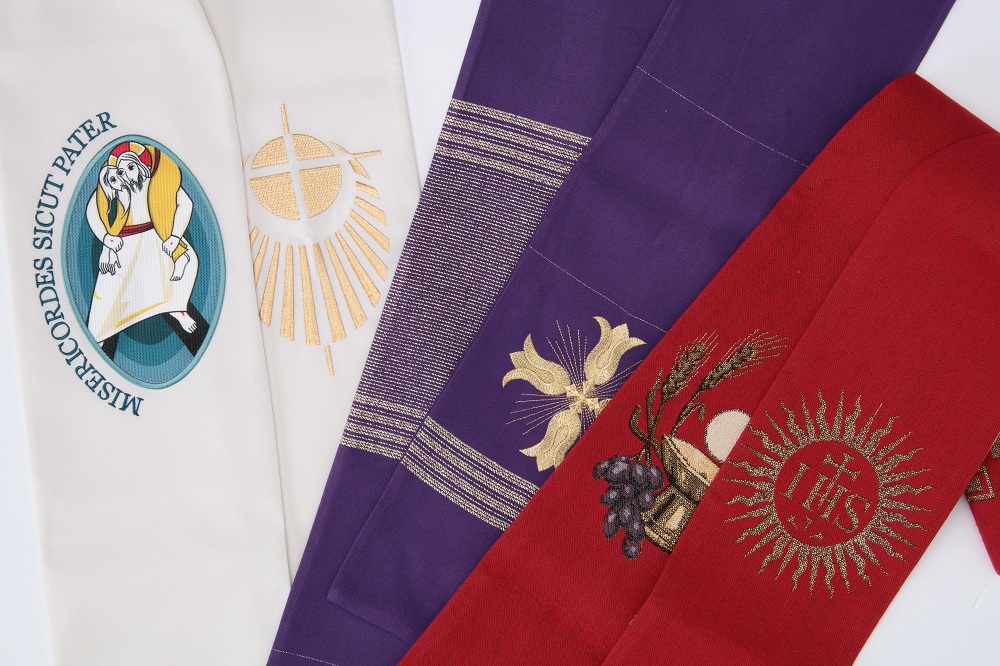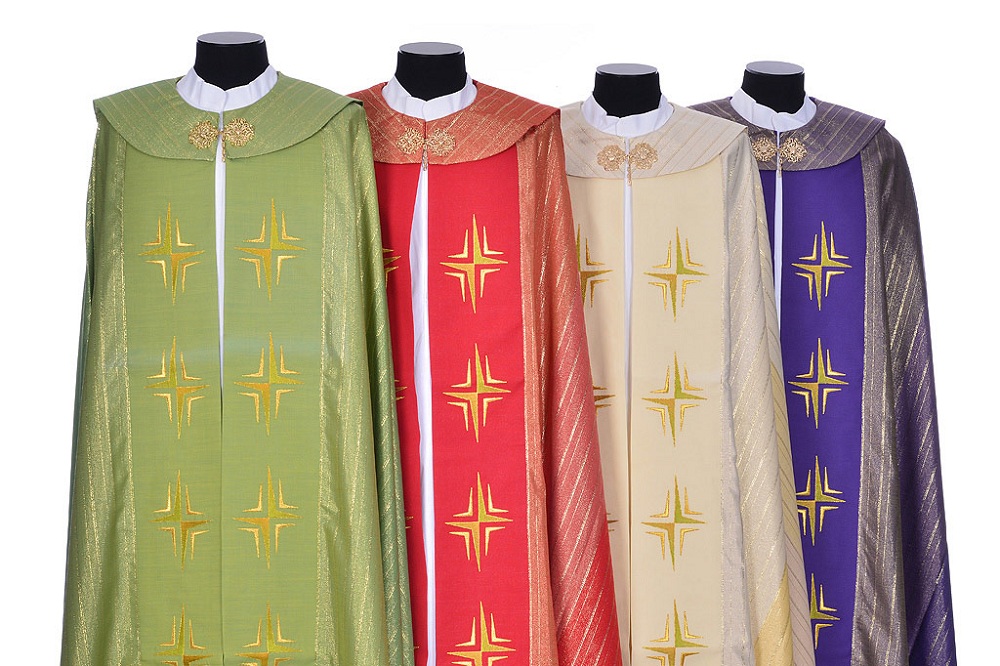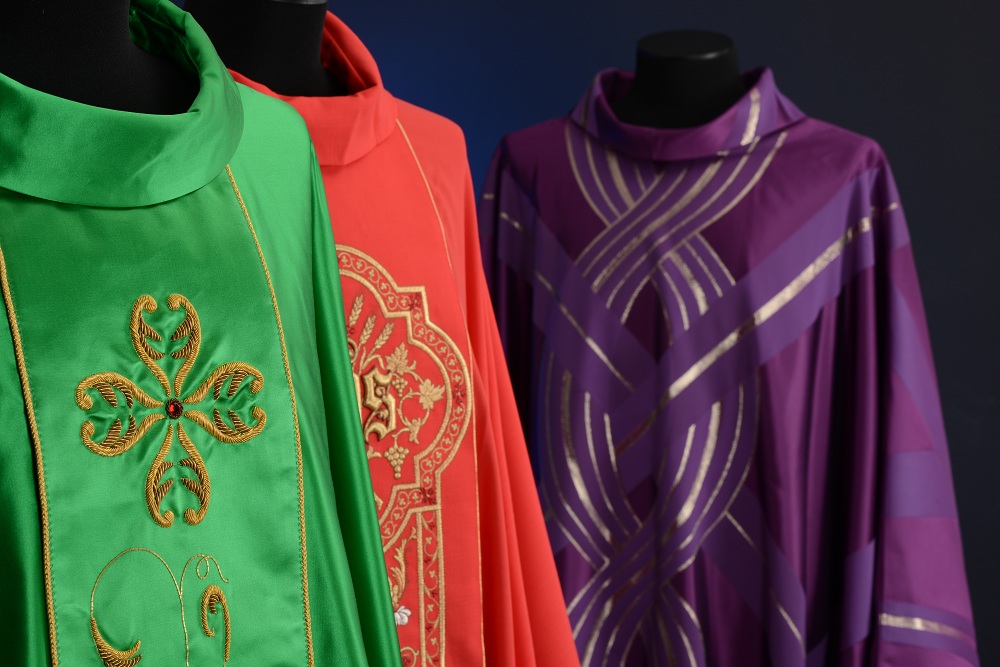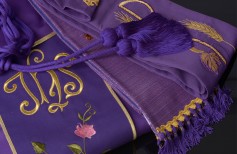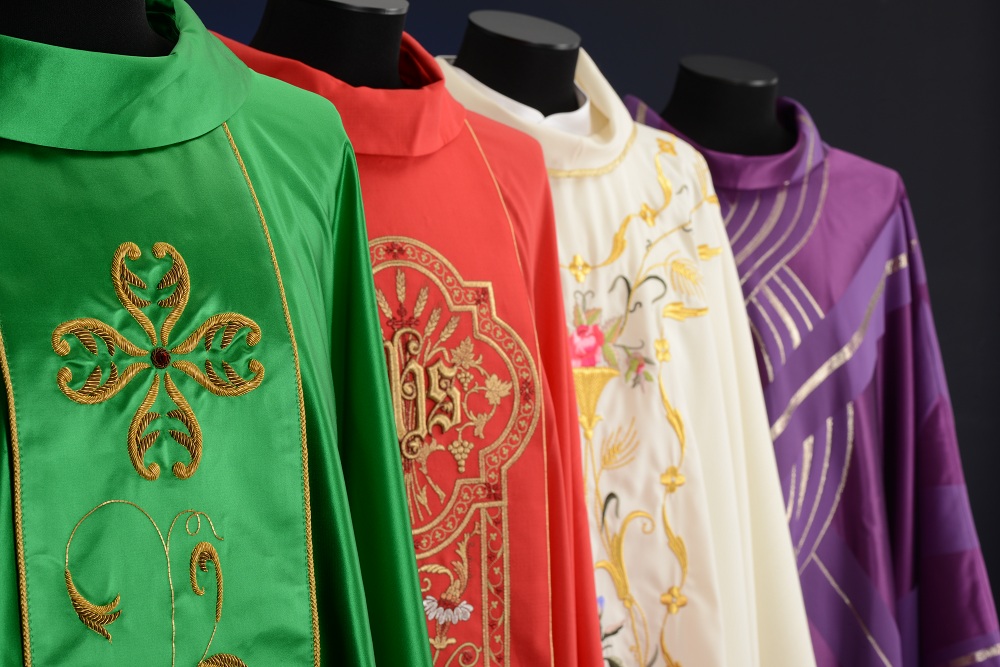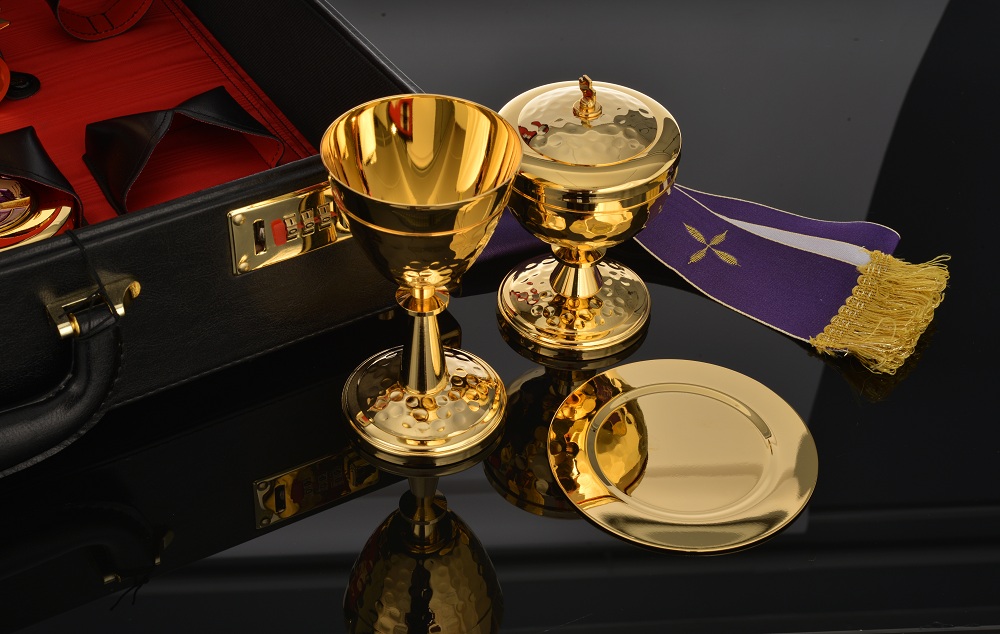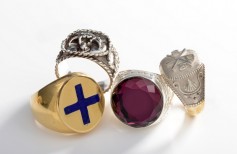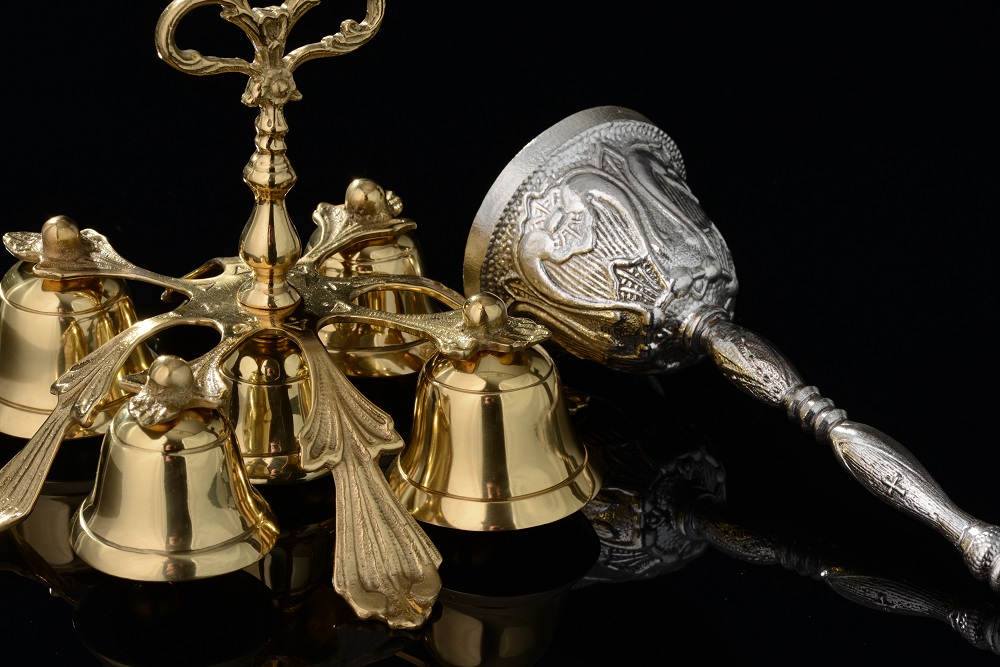The liturgical stoles are a vestment worn by deacons, priests and bishops just under the chasuble. In particular, the deacons wear the liturgical stoles on the shoulders, passing on the left shoulder and tying them under the right arm; priests and bishops wear them simply around the neck, loose on the chest.
The liturgical stole stated itself as a typical vestment of the deacon, the priest and the bishop only in the 10th century. Originally, it was called “map” or “sudarium”.
The deacon liturgical stole would come from “map” which was brought by the ancient priests on the left shoulder and worn to serve during the pagan sacrifices.
The “sudarium” was instead a cloth that speakers wore around their neck to dry and wipe away the sweat during the oratorical disputes; later, the priests began to use some sort of shroud to protect the face from the cold in winter or to wipe away the sweat.
Both these vestments, in time, would take the typical form of a strip, typical of current liturgical stoles, about 200-250 cm long and 8-10 cm wide.
The liturgical stole is usually made of silk, but it can also be packaged in another fabric.
Before the liturgical reform, liturgical stoles had a cross in the middle and at the bottom of each strip. Very ornate and rich patterns existed. Today the liturgical stoles tend to be much simpler.
The color of the stole depends on the occasion and the celebrations and follows the liturgical colors.

